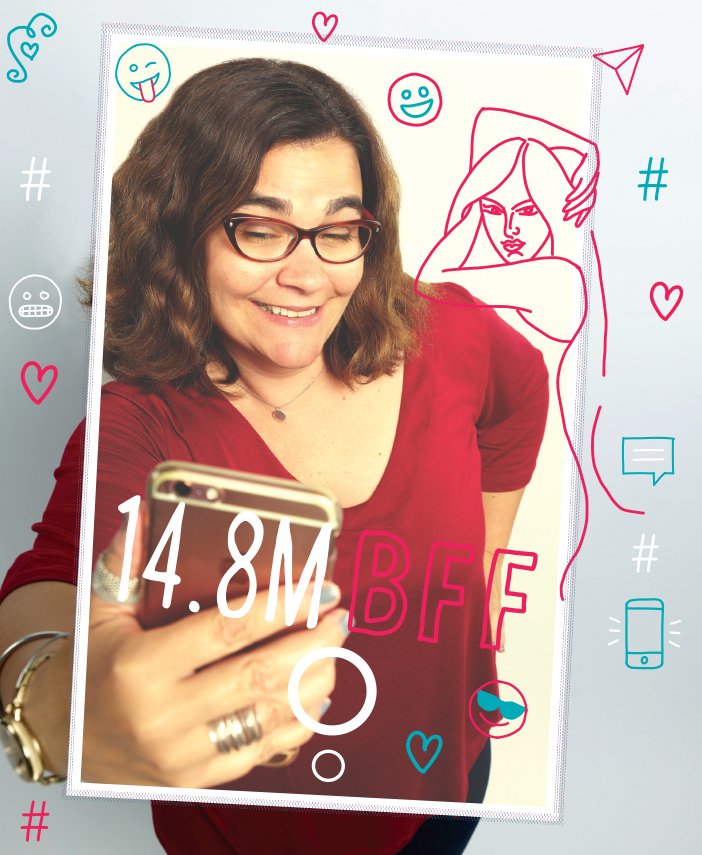
Celebrities post images on the same medium we use to wish our best friend happy birthday, notes modern historian Kathy Feeley, reinforcing the sense that we’re getting a peek into their real lives. (Photo by William Vasta; illustration by iStock.com/aelitta)
t’s a game as old as celebrity itself—fans hunger to know stars on a personal level, and entertainers stoke their popularity by building a connection with the audience. Now technology is changing the rules of the fame game.
Social media provides celebrities the power to bypass journalists and corporate gatekeepers to shape their own personas. And no matter how scripted in reality, digital communication gives fans a sense of intimacy and authenticity, says Kathy Feeley, who teaches modern history at the U of R.
No one cultivates the feeling of intimacy better than Beyoncé.
“I’m sure she has a public relations team,” says Feeley. “I’m not giving her all the credit. But it’s her Tumblr and Instagram that release pictures of her family. They show up in People and US magazines after the fact. So she has brilliantly seized control of her own narrative.”
Of course, meticulously crafted online personas aren’t just for the famous anymore, Feeley points out. Nearly 1.42 billion people log onto Facebook at least once a day, spotlighting the high points of their lives or offering up carefully curated misery, blurring the line between authenticity and publicity.
As celebrities post images on the same medium we use to wish our best friend happy birthday, it reinforces the sense that we’re getting a peek into their real lives. When actor Justin Theroux puts a supposedly candid photo of his wife, Jennifer Aniston, on his Instagram account, “people go wild,” says Feeley.
Celebrity gossip dates back at least to the first part of the 20th century, when powerful Hollywood columnists Hedda Hopper, Louella Parsons, and Sheilah Graham battled for scoops. But even then, the idea that fans were being let in on secrets of the famous was mostly an illusion, says Feeley, who has written extensively on the subject.
“A lot of what passes for celebrity gossip then and now is promotion,” she says. “So little of it is actually salacious. It’s business news. Sometimes it does include information about who’s divorcing or who’s having a baby, but it’s also who’s working on what project.”
The difference back then was that movie studios managed the release of information, working closely with fan magazines to create a sense of intimacy between readers and a star—while making sure the celebrity stayed on script. Joan Crawford, for example, wanted to answer her own fan letters, but MGM wouldn’t let her, Feeley says. Born Lucille LeSueur, Crawford didn’t even get to choose her own stage name. The studio ran a contest asking readers to send in suggestions. “She’s literally a fan magazine creation,” says Feeley.
Today, Cher communicates directly with her 3.31 million Twitter followers in a steady stream of posts that range from affectionate mentions of her mom to expressions of political outrage. Feeley acknowledges those Tweets do seem pretty authentic, even as she reminds herself not to buy into the illusion.
“There’s always a performative aspect to it when you’re playing to your fans via social media,” Feeley says. “Even Cher’s Twitter profile is consistent with her persona as a megastar who speaks very forthrightly about lots of issues, including social issues.”
So it’s Cher playing Cher. But she’s doing it on her own terms.
Next: Digital disruption #5: Mastering music in the age of digitized perfect pitch and media convergence



